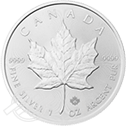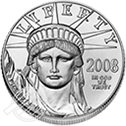U.S. Crosses $31 Trillion in Debt Threshold
The United States was reportedly in debt to the tune of $31 trillion. Yes–that’s trillion.
To put this figure into context, well, let’s just say that you could stack $100 bills in massive piles all around the Statue of Liberty, and literally box her completely in.
How Did the U.S. Get So Indebted?
How did the U.S. get here you may be thinking…Well, the massive debt is a combination of things including previous tax cuts, fighting in wars and economic stimulus. Think about that for a moment. The Iraq war, the war in Afghanistan, the QE used to combat the financial crises of 2008/2009, the Reagan tax cuts of the early 80s followed by tax cuts from Bush in the early 2000s.
The price tag on such expenditures is enormous, and once you start adding interest on top of it, the effects of it are astounding. In fact, given such a significant sum, it begs the question of whether or not the money will ever-or could ever-actually be repaid.
The U.S. Can Default
Think the U.S. cannot possibly default? Think again. A default, however, could come in a different form than an outright lack of payment. The country could find itself with no choice but to continue printing money. A massive currency devaluation could potentially be a way out for the government, but that way out will come at the expense of taxpayers and anyone holding dollars.
As the supply of dollars is increased, the value of each and every dollar would likely decrease. By flooding the market with more paper money, the Fed could potentially print the money needed to repay the debt but do so at the expense of the dollar.
Think for a moment about paying $8 for a gallon of gas, or $7 for a gallon of milk. How about $5 for a loaf of bread. A massive effort to devalue the dollar could potentially cause the price of goods and services to explode. The reduction in purchasing power could have a dramatic effect on households and the economy that are already struggling greatly with the effects of inflation at 40-year highs.
Now Is The Time To Consider Adding Assets That May Help Preserve Your Purchasing Power
Given the newly reached milestone of U.S. debt, now may be the ideal time to consider diversifying your holdings with assets that can potentially help protect your purchasing power. Now may be the ideal time to consider hard assets like physical gold.
Gold has been considered a reliable store of wealth and value for thousands of years. Gold carries zero counterparty risk, and cannot go bankrupt or default. Gold may potentially provide a meaningful hedge against a weaker dollar, and may potentially help preserve your purchasing power.
Adding physical gold to your portfolio has never been easier than it is today. Speak with an Advantage Gold account executive today about the potential benefits of gold ownership. Our associates are here to answer any questions you may have, and can even show you how to buy and hold physical gold using your IRA account.
Don’t wait for a massive currency devaluation to erode your purchasing power.
Talk to an IRA advisor about how to rollover your 401(k) into a Gold IRA by opening a self-directed IRA account, contact us or call us at 800-341-8584 today.



